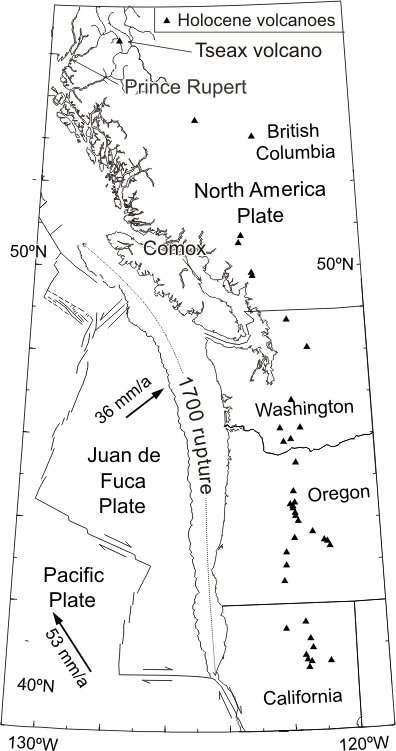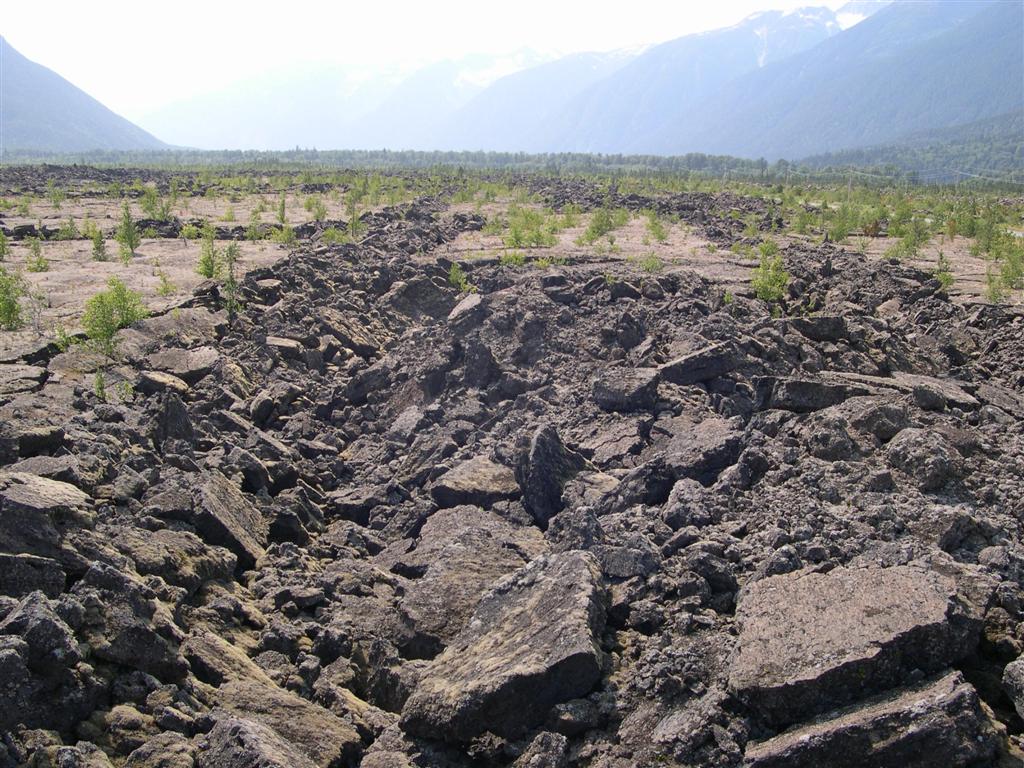North America’s
largest recent earthquake may
have triggered a volcanic eruption in British
Columbia
The
Cascadia megathrust earthquake of 1700 CE affected the whole Pacific
coast of North America and may have rejuvenated a
basaltic volcano in
central British Columbia, Canada.
Megathrust
earthquakes are some of the most impressive and dangerous geologic
events: the
shaking itself, as well as the possibility of tsunamis make these
events very
destructive. There is now growing evidence that volcanic eruptions can
be
triggered by these earthquakes, adding to the list of dangers. Most
megathrust earthquakes occur in regions like the west coast of South
America.
However, 309 years ago such an earthquake struck the Pacific Northwest
of the
US and Canada. The Cascadia earthquake was recognised from tsunami
records in Japan and changes in sea level
along 1000 km of the coastline
of British Columbia, Washington and Oregon. The earthquake was not
recorded in written
documents, but information on the event was preserved in the oral
traditions of
the First Peoples (Indians).
Although
the province of British Columbia has many volcanoes, volcanic activity
is much
less than in the states to the south. One of the largest eruptions in
the last
1000 years was from Tseax volcano. The 30-km-long basalt flow killed
2000
people when it engulfed two villages, making it Canada’s
worst natural
disaster. The traditional date for the eruption was 1780, based on an
anthropologist’s
and a missionary’s interpretation of oral traditions.
However, a geologist at
the Université du Quebec ŕ Chicoutimi, Canada, has shown that it must be
earlier. A comparison
of existing magnetic data from the flow with marine magnetic
measurements made
by the navigators James Cook and George Vancouver suggests that it
actually
erupted around 1700, close to the date of the Cascadia earthquake.
Indeed, tradition holds that the eruption was preceded by ground
shaking, which
may have been the Cascadia earthquake itself.
The
Tseax volcano may have been particularly sensitive to triggering
because it had
already erupted in the 12th century. Study of
crystals in the rocks
suggests that the magma may have been kept molten since that time by a
stream
of hot CO2 gas from a deeper magma chamber. This
magma could have then
easily erupted in response to stresses produced by a distant earthquake.
If
this mechanism is important then many other dormant or inactive
volcanoes may
be reactivated by major earthquakes. Nature hazard planning must then
be
enlarged to include this possibility.



